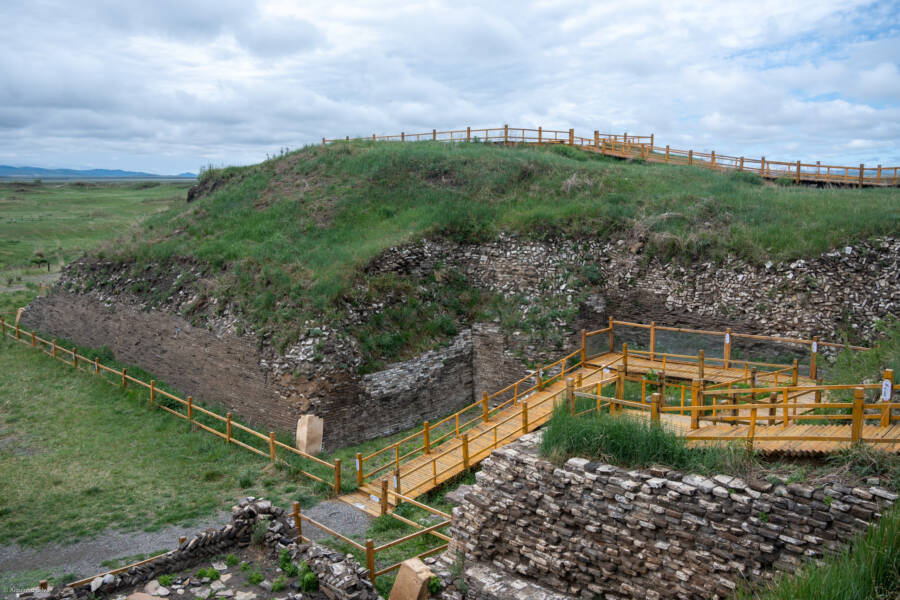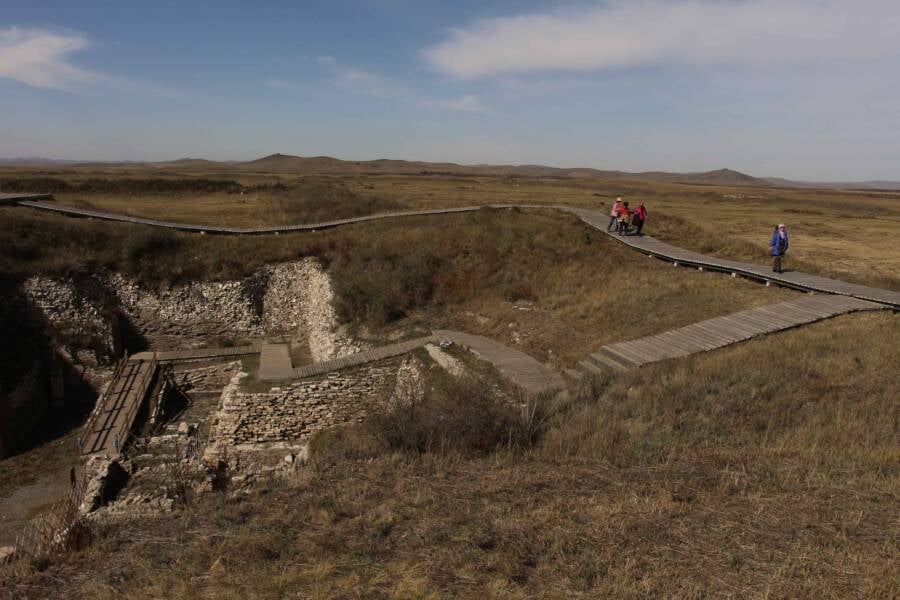The Lost City Of Xanadu: The Summer Capital Of The Yuan Dynasty

xiquinhosilva/Wikimedia CommonsThe site of Xanadu in Inner Mongolia.
Shangdu — known in the West as Xanadu — served as the summer capital of the Yuan Dynasty during the 13th and 14th centuries.
Built in the 1250s by Kublai Khan’s Chinese advisor Liu Bingzhong, the city represented a unique fusion of nomadic Mongolian and Han Chinese cultures. From this grassland capital on the Mongolian plateau, Kublai Khan first established his power base before founding the Yuan Dynasty, which would rule China for nearly a century and extend its influence across Asia.
The city was planned according to traditional Chinese feng shui principles, positioned with mountains to the north and a river to the south. Its innovative design combined Han Chinese architectural elements with Mongolian palace structures and yurt-style buildings. Marco Polo visited Kublai’s court between 1275 and 1292, famously describing it as a city of grandeur with a “cane palace” — a description that would later inspire Samuel Taylor Coleridge’s romantic poem “Kubla Khan.”

Flaumfeder/Wikimedia CommonsThe ruins of Xanadu.
The city’s significance extended beyond politics and architecture, though.
Xanadu hosted momentous religious debates in the 13th century that resulted in the spread of Tibetan Buddhism throughout northeast Asia, establishing a religious tradition that continues today. However, Xanadu’s glory was short-lived. When the Ming Dynasty replaced the Yuan in 1369, the city was stripped of its status and reduced to a border guard post. It was ultimately abandoned in 1430.
For centuries, the lost city existed to the outside world only in legend and literary imagination. Then, in 1872, British diplomat Steven Bushell visited the site and published details of his travels in the Journal of the Royal Asiatic Society of Great Britain and Ireland. He wrote, “The ground in the interior of both inclosures is strewn with blocks of marble and other remains of large temples and palaces, the outlines of the foundations of some of which can yet be traced; while broken lions, dragons, and the remains of other carved monuments, lie about in every direction, half-hidden by the thick and tangled overgrowth.”
Xanadu only opened to the public in 2011, and excavations of the lost city are ongoing to this day.
After learning about these lost cities from around the world, go inside some of the world’s most haunting sunken cities. Then, check out 44 of the most stunning ancient ruins across the globe.





